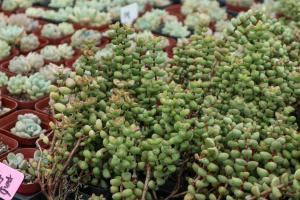Can Aquarium Plants Stay in Pots?
Aquarium plants are an essential aspect of any aquatic environment. They have numerous benefits, such as oxygenating the water, providing shelter and hiding spots for fish and other aquatic creatures, and improving water quality by absorbing harmful nutrients such as nitrates and phosphates. While most aquarium plants are planted directly in the substrate, some aquarists wonder if it's possible to keep plants in pots instead. In this article, we will explore whether aquarium plants can stay in pots and the advantages and drawbacks of doing so.
Advantages of Keeping Aquarium Plants in Pots
The primary advantage of keeping plants in pots is their ease of maintenance. Potted plants are easier to move around, replant, or remove compared to plants rooted in the substrate. This makes it easier for aquarists to maintain a neat and well-organized aquarium. Additionally, potted plants can be used to control the growth and size of certain plants, preventing them from taking over the tank. Potted plants are also useful for aquarists who like to experiment with different plant placements or layouts without having to make permanent changes to the tank's layout.
Drawbacks of Keeping Aquarium Plants in Pots
While there are benefits to keeping aquarium plants in pots, there are also drawbacks that aquarists need to consider. One of the main issues is that potted plants may not be able to absorb sufficient nutrients from the water column, especially if the pots are deep and narrow. This can lead to stunted growth, yellowing leaves, and overall poor health. Additionally, if potted plants are not properly fertilized, they may suffer from nutrient deficiencies that can negatively impact their growth and health. Finally, potted plants may not be suitable for certain fish or invertebrates that require open swimming spaces or sandy substrate that can be disturbed by root growth.
Types of Aquarium Plants That Can Be Kept in Pots
While not all aquarium plants are suitable for growing in pots, there are several that can thrive in this type of environment. Some popular potted plants include anubias, java ferns, and bucephalandra. These plants have hardy leaves that can withstand being removed from the substrate and replanted in pots. Additionally, these plants have slow growth rates, making them ideal for aquarists who want to keep their aquarium plants under control. Finally, these plants do not require a lot of light or nutrients, making them suitable for low-tech aquarium setups.
How to Keep Aquarium Plants in Pots
To keep aquarium plants in pots, aquarists need to carefully select the right pot size and type. Pots should be wide and shallow to allow sufficient nutrient absorption and root growth. Additionally, pots should be made of a porous material like clay, which allows air and water to circulate freely. When planting aquarium plants in pots, it's important to use a high-quality substrate like aquatic soil or sand to provide the plant with essential nutrients. Finally, potted plants should be fertilized regularly to ensure they receive the necessary nutrients for healthy growth.
Conclusion
In conclusion, aquarium plants can indeed stay in pots, but whether this is an ideal solution depends on individual circumstances. While potted plants have several advantages, such as ease of maintenance and control over plant growth, they also have drawbacks such as nutrient deficiencies and limited space for root growth. Ultimately, the decision to keep plants in pots should be based on the specific needs of the aquarium and the types of plants and animals housed within it.

 how many times do yo...
how many times do yo... how many planted tre...
how many planted tre... how many pine trees ...
how many pine trees ... how many pecan trees...
how many pecan trees... how many plants comp...
how many plants comp... how many plants can ...
how many plants can ... how many plants and ...
how many plants and ... how many pepper plan...
how many pepper plan...































